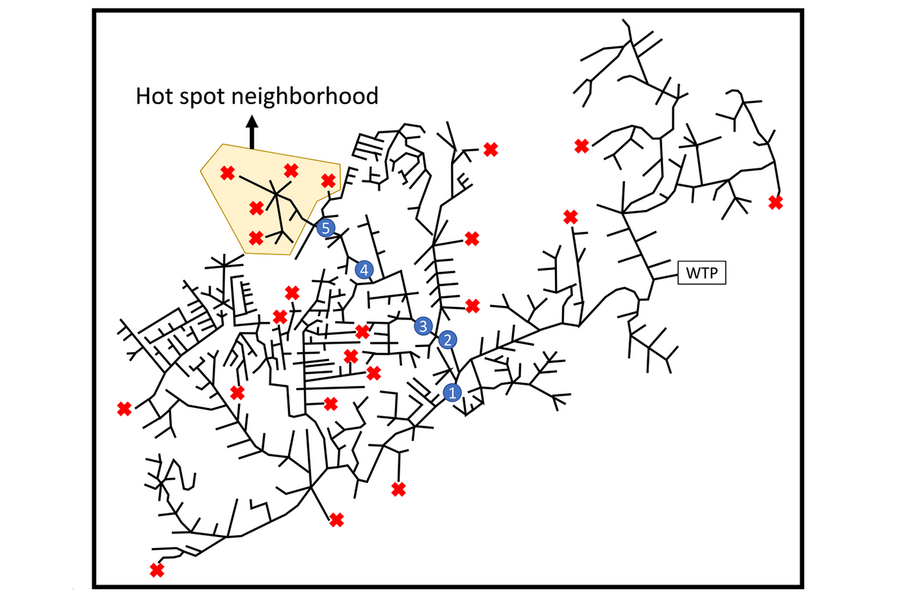How sewage is becoming a gold mine (of COVID information) for scientists
“I’m headed off to college to study raw sewage,” said no one, ever. At least, I doubt that’s what any science-savvy college freshman would plan as a major. But it turns out that sewage may be a key to tracking and stopping outbreaks of COVID-19 and other epidemics, and scientists are turning into “poop-sleuths.”
That’s because people infected with COVID-19 shed traces of COVID in their waste. And, as The New York Times reported, “The coronavirus could turn sewage surveillance into a mainstream public health practice.”
Wastewater epidemiology
According to the Covid19Poops Dashboard, a directory of global efforts to track the virus through wastewater, researchers from 54 countries are now working in the field of wastewater epidemiology. Per the collaboration, “Wastewater monitoring for SARS-CoV-2 RNA has been shown effective to predict outbreaks of COVID-19 by 2-14 days. The virus recovered in wastewater can sample whole city populations with results in 1-2 days.”
Predicting outbreaks, early identification of the arrival of new variants, and determining if an increase in cases is from stepped-up testing or the result of an outbreak are just some of the demonstrated results of wastewater epidemiology.
Mass testing is passive and highly cost-effective. By giving officials a week or more warning before a major outbreak, cities could prioritize an area for testing to avoid spread. But how can “mass surveillance” of COVID trends be used to zero-in on patient zero? There’s an algorithm for that, as well.
To zero in on patient zero
By locating a higher-than-expected concentration of COVID in the wastewater, municipalities can focus testing in the area and thus reduce community disease spread. The problem becomes how do you narrow your geographic search to a neighborhood or an individual street. If you only test as the sewage enters a wastewater treatment plant, you only identify community-wide spikes in infection.
To find the sources of COVID outbreaks in neighborhoods, municipalities can test samples from the neighborhood sewers instead of waiting for the water to reach the treatment plant. But testing sewer-by-sewer across an entire municipality adds delays and costs.
A team of researchers from MIT created algorithmic procedures in MATLAB to home in on locations and or neighborhoods within the community that are most likely to have infections. MIT News noted, “Letting an algorithm decide which maintenance holes to test for evidence of coronavirus could improve pandemic containment efforts.”
A paper co-authored by Dr. Richard Larson, a professor at MIT, details two algorithms that can determine which sewer manholes in a community to test to lead to sources of a potential outbreak. “The algorithms rely strongly on the structure of the sewage pipeline network,” Larson told MIT News. “It’s a ‘tree network,’ where sewage flows in one direction from its source through a unique path to the wastewater treatment plant.”
Their data source is wastewater sampled and real-time tested from selected manholes. The algorithms dynamically and adaptively develop a sequence of manholes to sample and test. The algorithms are often finished after 5 to 10 manhole samples, meaning that—in the field—the procedure can be carried out within one day. The goal was to provide timely information that will support faster more productive human testing for viral infection and thus reduce community disease spread.
Using their tree graph approach, the same team of researchers recently published a new paper in the journal PLOS ONE. They propose placing sensors in sewer networks to pinpoint new coronavirus cases:
“According to public works experts with whom we have consulted, assuming that fast on-scene tests are available, each test would require about one hour, start to finish. That means that eight manholes tests in one day is about the maximum. Since we seek speed in identifying the infected individual(s), we want to assure that the testing can be done in one day. In this new paper, we do that by strategically placing semi-permanent sensors in selected manholes, sensors that would in real time relay any “Red Light” reporting coronavirus infection in sewage passing through that manhole. “
Scientific community rallies to fight COVID-19
This research is an excellent example of how scientists and engineers have focused their knowledge and skills to battle COVID-19 over the past year. From testing, tracking, treatments, and vaccines, the scientific community has worked at breakneck speed to help shorten the current pandemic and lessen the burden worldwide.
To see more about how engineers and scientists from all over the world pivoted to take on the monumental challenge of fighting COVID-19, check out the MathWorks 2021 Keynote address. A curated collection of COVID-19 research is also available here.
 Cleve’s Corner: Cleve Moler on Mathematics and Computing
Cleve’s Corner: Cleve Moler on Mathematics and Computing The MATLAB Blog
The MATLAB Blog Guy on Simulink
Guy on Simulink MATLAB Community
MATLAB Community Artificial Intelligence
Artificial Intelligence Developer Zone
Developer Zone Stuart’s MATLAB Videos
Stuart’s MATLAB Videos Behind the Headlines
Behind the Headlines File Exchange Pick of the Week
File Exchange Pick of the Week Hans on IoT
Hans on IoT Student Lounge
Student Lounge MATLAB ユーザーコミュニティー
MATLAB ユーザーコミュニティー Startups, Accelerators, & Entrepreneurs
Startups, Accelerators, & Entrepreneurs Autonomous Systems
Autonomous Systems Quantitative Finance
Quantitative Finance MATLAB Graphics and App Building
MATLAB Graphics and App Building











Comments
To leave a comment, please click here to sign in to your MathWorks Account or create a new one.